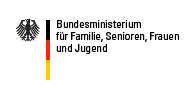Processes for job evaluation
Processes for job evaluation
Structured processes have a key role in non-discriminatory evaluation of work. It is only by means of such processes that it can be ascertained that both pay systems and evaluations of individual jobs fulfill the requirements of the adjudication of the European Court of Justice and the German Federal Employment Court: differentiations that are made must
In principle, two kinds of job evaluation can be distinguished:
The best-known analytical process for job evaluation which endeavors to provide non-discriminatory job evaluation is the Analytical Evaluation of Jobs after Katz and Baitsch (ABAKABA).
- be transparent, understandable and testable;
- follow criteria that describe the work completely and appropriately;
- follow criteria that do not discriminate in relation to gender and are not based on gender stereotypes.
In principle, two kinds of job evaluation can be distinguished:
Summary job evaluation
Summary evaluation, which is used in most traditional remuneration systems, involves describing the work or job using various criteria and evaluating it as a whole. As the criteria used cannot be applied to all jobs, there is a great deal of room for maneuver for subjective and gender-specific assessment of a job. For instance, the physical requirements of lifting and carrying are given a strong evaluation in construction jobs, while this criterion is entirely missing from the evaluation of nursing care for the elderly. These processes do not therefore fulfill the requirement of equal criteria for jobs done predominantly by men and by women and are thus structurally unsuitable for use in any non-discriminatory job evaluation.Analytical job evaluation
Analytical job evaluation involves weighting a defined set of criteria or features independently of each other individually for all jobs. The part-values thus arrived at are counted together and form the basis for financial differentiation in pay. Thus, these processes comply with the requirement of applying equal criteria to jobs done predominantly by men and by women. Nevertheless, gender-specific discrimination can occur in analytical job evaluation. This is the case if the selection of evaluation criteria is one-sided. In analytical job evaluation processes as well, for instance the physical requirements crucial for jobs traditionally done predominantly by women (e.g. educator, hospital orderly) are frequently not sufficiently taken into account. These jobs are then not completely and appropriately described. This defect can, however, be remedied by extending the process. The way criteria are worded must be checked in terms of the materials of the individual process.The best-known analytical process for job evaluation which endeavors to provide non-discriminatory job evaluation is the Analytical Evaluation of Jobs after Katz and Baitsch (ABAKABA).
Literature:
- Katz, Christian; Baitsch, Christoph: Lohngleichheit für die Praxis. Eidg. Büro für die Gleichstellung von Frau und Mann (Hrsg.). Zürich 1996.
- Kommission für die Bewertung und Einreihung der Funktionen: System EVALFRI. Funktionsbewertung beim Staat Freiburg, Freiburg 2001. http://www.fr.ch/spo/de/pdf/evalfri/systeme_de.pdf
- Krell, Gertraude/Winter, Regine: Anforderungsabhängige Entgeltdifferenzierung: Orientierungshilfen auf dem Weg zu einer diskriminierungsfreieren Arbeitsbewertung, in: Krell, Gertraude (Hg.): Chancengleichheit durch Personalpolitik - Gleichstellung von Frauen und Männern in Unternehmen und Verwaltungen. Rechtliche Regelungen, Problemanalysen, Lösungen (4. Aufl.), Wiesbaden 2004, S. 309-332.
erstellt von Administrator
—
zuletzt verändert:
02.01.2010 20:07





